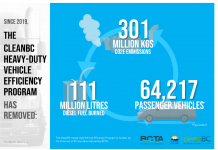A survey was conducted online August 2020 to March 2021 for various trucking organizations across Canada to collect data on health and wellness during COVID-19. Participants reported similar challenges around fatigue. Compared with before COVID-19, truck drivers have worked significantly more hours and consumed more caffeine. More than 50% reported being fatigued.
The supply chain and the weakest link – Fatigue
Global Supply chains – are vast world networks of resources, money, information, goods, and people that we rely on to get goods/services to us. These networks must be dependable, productive, and efficient. However, given we were already in disarray because of the COVID-19 pandemic, resulting in massive shortages, disruptions, and price inflation the chain is broken. Add to it…the Russian war against Ukraine and the rightful global sanctions have immediately put further strains on the supply lines, prompting skyrocketing energy prices and even fears of famine in some countries. The global supply chain is adapting by asking for more from all of us. Each truck driver …. each dock worker…. each trucking office worker have been called upon to give more. But at what cost? Burnout? Beyond these short-term effects, it is believed the war in Ukraine could drastically reshape global supply chains in a way the pandemic never did. New transitions and changes involving an even greater loss of time until new conduits and processes are formed. Trucking companies have only partly addressed the weaknesses in global supply chains exposed by the coronavirus pandemic. In the face of these new challenges, finishing the job is even more urgent. We grow weary from change and solutions must be found soon to keep pace. Fatigue is high on this list of the weakest link in the global supply chain. How do we keep going?
In the trucking industry some root causes of driver fatigue under general trucking operations
In March 2019, drivers, supervisors, and employers from Ontario’s trucking industry identified driver fatigue as a top risk in the trucking sector during a risk assessment workshop.
In 2020, a follow up workshop – with the support of the Ministry of Labour, Training and Skills Development (MLTSD) in partnership with IHSA – gathered drivers, supervisors, and employers again to examine the causes of driver fatigue.
A list of the top 5 critical root causes of driver fatigue resulted in this list…
- Traffic Conditions: construction zones, road design and weather.
- Health conditions & unhealthy lifestyle: limited or poor food choices; lack of rest and irregular sleep; not enough exercise
- Work-life balance: long hours on the road; time away from friends and family Stress pressure from management, dispatch, and customers; wait times at customer’s locations; meeting deadlines Mental health anxiety, depression, substance abuse
- Hypnotic effects during: periods of drowsiness snow or rain coming at the windshield; driving long hours on open highways Not enough truck/rest stops long distances between safe rest areas; not enough quality amenities Lack of education & training to recognize driver fatigue myths about fatigue; use of inappropriate (instead of safe) ways to deal with fatigue
- Licensing doesn’t align with skill requirements: some vehicles are more difficult to operate (i.e., automatic vs. manual transmission, different forms of vehicles); lack of experience and training provided through licensing
What can employers and workers do to prevent driver fatigue on the job?
Employers:
- Implement policies that set overtime limits and maximum allowable consecutive shifts.
- Ensure sufficient staffing levels across operations.
- Provide employee training on sleep health and fatigue management.
- Implement a workplace sleep disorder screening and management program.
- Allow for rest breaks and napping during extended work shifts.
- Give supervisors and workers fatigue-symptom checklists and encourage self-reporting.
- Encourage peer monitoring of fatigue symptoms among co-workers.
- Review data from in-vehicle monitoring systems to detect signs of possible fatigue episodes, such as lane departures.
- Consider using wearables such as an instrumented wristband to monitor driver fatigue.
- Train incident investigators to assess the role of fatigue in incidents and near-miss incidents.
Workers:
- Get enough sleep (7-9 hours each day). If fatigue persists after adequate sleep, get screened for health problems that may be affecting your sleep.
- Plan your activities outside work to allow enough time for adequate sleep.
- Create a sleeping environment that helps you sleep well: a dark, quiet, cool room with no electronics.
- If you feel fatigued while driving: pull over, drink a cup of coffee, and take a 15-30 minute nap before continuing. The effects are only temporary – the only “cure” for fatigue is sleep.
- Watch yourself and your co-workers for signs of fatigue.
- Report instances of fatigue in yourself and others to your direct supervisor, who can help to determine the safest course of action.
- Speak honestly if you are questioned about a fatigue-related incident. Fatigue is a normal biological response – it is not a reflection of how well you do your job.
The bottom line:
No amount of experience, motivation, or professionalism can overcome your body’s biological need to sleep/rest. However, employers and workers can take steps to prevent the chain of events that could lead to a fatigue-related outcomes. Employers, learn more about implementing a fatigue risk management system. It should be noted …The trucking industry also suffers huge absenteeism from illness, anxiety, fatigue and uncertainty.
Update…
On June 12, 2022, updates to the provincial Highway Traffic Act Regulation 555/06 (Hours of Service) will come into force. These changes will make it mandatory for commercial motor vehicle drivers who operate within Ontario to use an Electronic Logging Device (ELD) to record their hours of service (HoS). Drivers of commercial motor vehicles who are currently required to maintain a daily log will be required to use a certified ELD.
To simplify operating requirements for Ontario commercial truck and bus carriers that operate both inside and outside of the province, Ontario’s ELD mandate closely matches the federal ELD mandate and will take effect for commercial truck carriers on June 12, 2022. This date aligns with the rollout of ELD enforcement for federally regulated commercial truck and bus carriers. Bus carriers who operate in Ontario only will be required to use a certified ELD as of July 1, 2023.






















